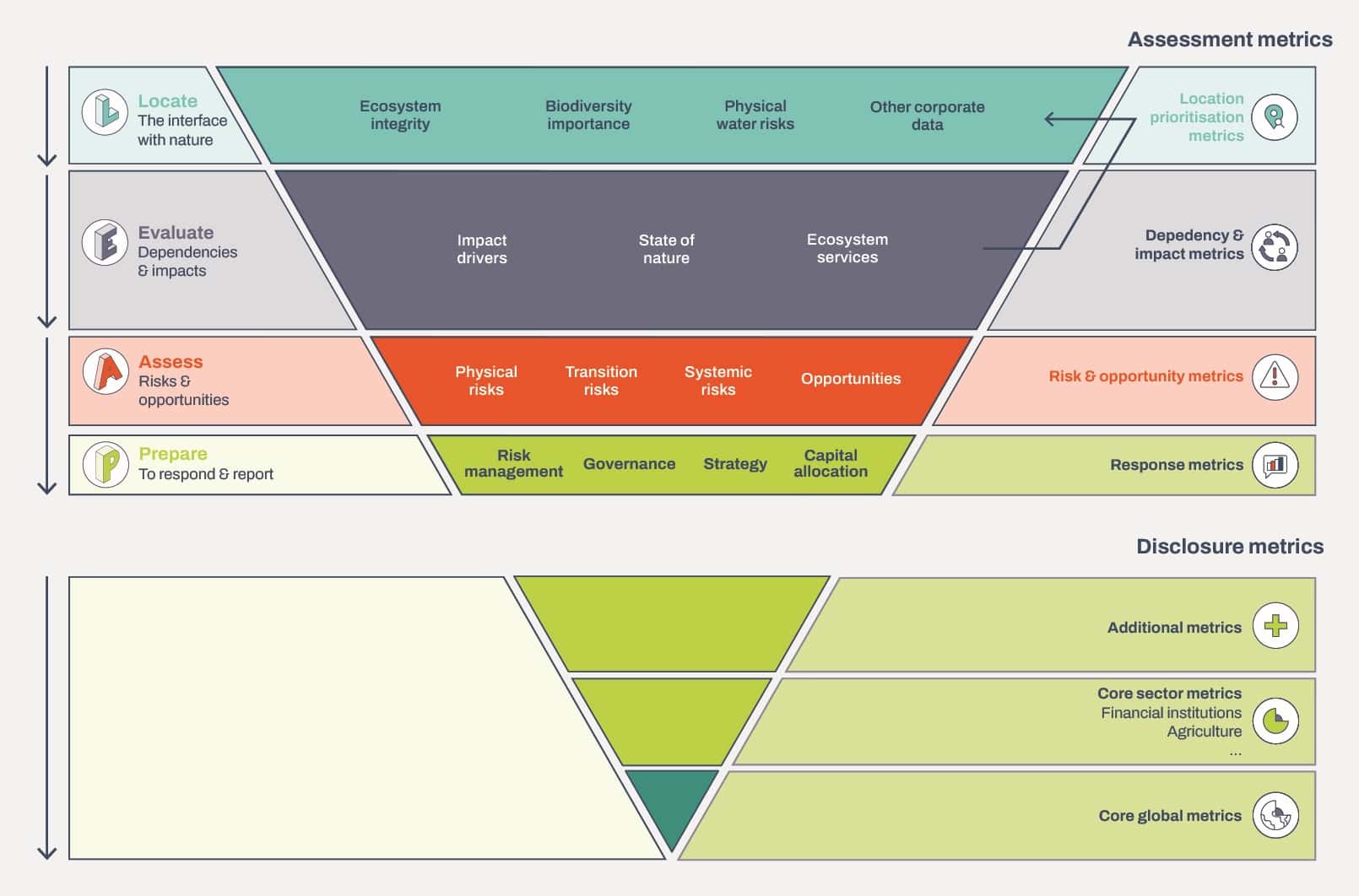
Outline
Date
18.10.2023
Read Time
3 min
Part 2: Unlocking business benefits using the TNFD framework
In the wake of growing concerns over environmental sustainability, businesses are increasingly exploring ways to integrate nature into their decision-making processes. The Taskforce on Nature-related Financial Disclosures (TNFD) framework has emerged as a powerful tool to help businesses navigate this complex terrain. Below are ways in which businesses can benefit from using the TNFD framework.
Understanding the TNFD framework
Origin of the TNFD
The TNFD, established in 2021, has a clear mission: to assist businesses in incorporating nature into their decision-making processes. It addresses critical issues associated with biodiversity loss and environmental degradation. The taskforce comprises 40 members, including financial institutions, corporates, and market service providers, boasting assets exceeding US$20 trillion. David Craig and Elizabeth Marema lead the TNFD as chairs, with support from the TNFD Forum, a consultative group encompassing various channels and institutional supporters.
TNFD components
1. Knowledge Partnership: The TNFD's Knowledge Partnership consists of 18 leading scientific organisations. It collaborates with various consultation groups worldwide to continually refine the framework, ensuring its relevance and effectiveness.
2. Stewardship Council and Secretariat: The Stewardship Council represents the funders and founders of the TNFD, which includes governments and philanthropic organisations. The TNFD Secretariat plays a crucial supporting role.
TNFD vs. TCFD
Both the TNFD and the Task Force on Climate-related Financial Disclosures (TCFD) share a common foundation, including governance, strategy, risk, impact management and metrics/targets. However, the TNFD extends the TCFD by introducing a location-based approach called the LEAP framework (Locate, Evaluate, Assess, Prepare) and emphasising stakeholder engagement.

Preparing for TNFD compliance
As businesses prepare for the TNFD framework, several practical steps can help streamline the process:
Assess existing practices: Examine how nature is currently integrated into your risk management process. Identify ownership of these aspects and ensure alignment with your sustainability reports.
Understand your operational footprint: Determine your operational footprint and the key stakeholders responsible for managing this data. Engage with internal stakeholders to facilitate implementation.
Data challenges: Be prepared for data challenges, as information may be scattered across various systems. Bridging gaps and interlinking data sources can be time-consuming but is essential for TNFD compliance.
Leverage available tools: Stay updated on publicly available data sets and tools related to nature's state. The availability of such resources is continuously evolving.
Benefits of TNFD compliance
Compliance with the TNFD framework offers businesses a range of benefits:
Operational efficiency: Focusing on waste and pollution reduction can lead to increased operational efficiency.
Supply chain improvement: Understanding and minimising environmental impacts within your supply chain can enhance sustainability.
Access to capital: In the future, sustainability criteria may become a prerequisite for accessing financial capital. Early adoption of the TNFD framework can position your business favourably.
Policy alignment: Governments worldwide are endorsing biodiversity reporting. Being ahead of the curve can align your business with evolving policies.
Investor relations: Investors are increasingly interested in how companies address biodiversity and nature-related risks. TNFD compliance can enhance your response to investor queries.
As businesses face growing pressure to address their impact on nature and biodiversity, the TNFD framework emerges as a valuable resource. By understanding its origins, components, and practical steps for compliance, businesses can not only safeguard their operations but also contribute to a more sustainable future. Embracing the TNFD framework goes beyond a choice; it's a strategic move towards responsible and resilient business practices.
For more on our series exploring the Taskforce on Nature-related Financial Disclosures, you can read our previous article which explores the potential of the framework for businesses, or our next article looking at the TNFD and its interaction with global standards.

